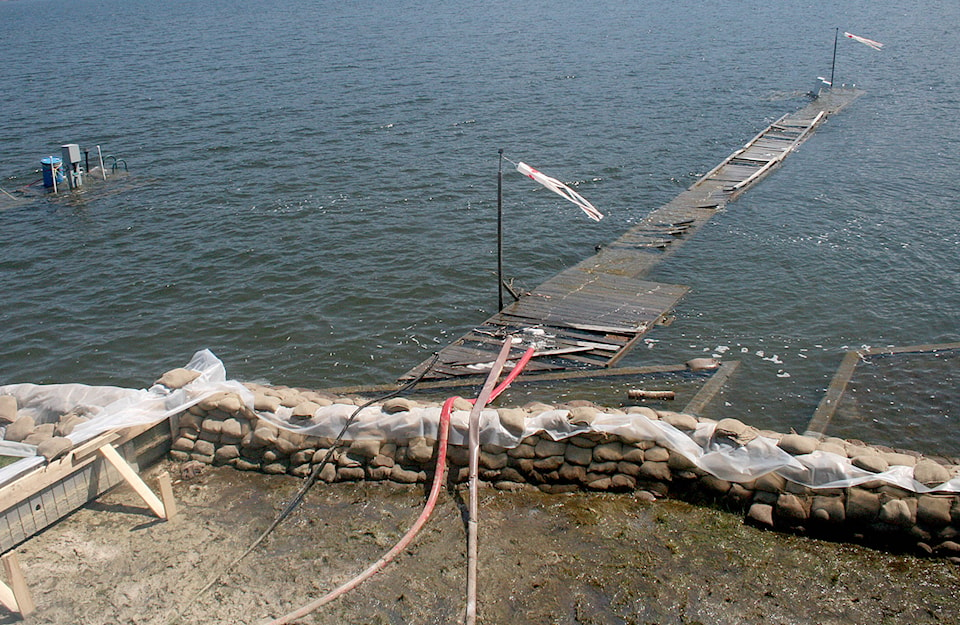Community leaders in the South Okanagan say they are as prepared as they can be for a possible repeat of last spring’s high water.
With the snowpack more than 140 per cent above normal, the concern is another warm rainy spring could rapidly melt the snow and once again raise water levels in lakes and creeks to dangerous levels.
“We have to be prepared. We’ve been making sure our dams are at levels are going to be able to handle the runoff,” said Summerland Mayor Peter Waterman, adding that Summerland crews are also making sure a fast freshet has someplace to go.
“We have to make some big fast moves in respect to Garnett Dam to make sure that we don’t have any backups or plugging of culverts. We’re going to be doing that almost immediately to move ahead and satisfy the potential risk in that area,” said Waterman. Interacting with the province with respect to last year’s flooding and the impact there.
And I think anything we do will be looking at and making sure that we’re enhancing things beyond what it was in terms of how to handle extra water.”
“Okanagan Lake is being drawn down as rapidly as possible right now,” said Waterman. “They’ve got the gates open; they actually can’t let any more water through.”
Waterman said district work crews are keeping a constant eye on Prairie Valley and other creeks in the community along making sure culverts and drains are clear.
“They are certainly trying to preempt any potential flooding. Certainly, everyone is more prepared logistically after last year,” said Waterman.
Penticton fire chief Larry Watkinson said they’ve been developing logistically as well, updating the emergency operations centre and other processes, along with training and awareness. But one of the biggest things they learned from last year’s flooding, he explained, was about enhancing communication between the city, the Regional District South Okanagan Similkameen and the provincial emergency program and how to request resources that are beyond the scope of the municipality.
“We have we have a better understanding how to get the paperwork through to the province to get it processed faster,” said Watkinson, explaining that helps for everything from equipment like the sandbagging machine that allowed them to fill about 4,000 bags an hour to the wildfire crews they requisitioned to come help put the sandbags in place.
“What really makes the system work better is the administrative capacity behind the scenes of all the operations,” said Watkinson.
Watkinson said there is a teleconference now every Wednesday with Emergency Management B.C., the provincial and regional emergency operations centre (PREOC) and affected communities.
“They discuss the anticipation of what the snowpacks going to do with weather patterns, lake levels, river forecast. So everybody has a better idea on exactly how to prepare their communities for the upcoming freshet,” said Watkinson. “We’re concerned warm temperatures with heavy rains could also produce high flows in the rivers and creeks and of course Okanagan Lake has the potential for rising waters.”
The benefit of that awareness, Watkinson said, is everybody is being very proactive and all in all the ministries they’re doing everything they possibly can to lower water levels in the lakes.
“They’re dumping water out of the lake as fast as they possibly can. Everything from Kalamalka Lake down to Skaha Lake,” said Watkinson. “I think my bigger concern isn’t so much the lake levels because we have control over that. It would be the rising temperatures in a short period of time with potential rains and overland flooding.”
That would also lead to high, fast-flowing water in creeks.
“People being intrigued by that, going too close to the creeks and getting caught up in the water,” said Watkinson. “We train every year, we recertify all of our members in swift water rescue as soon as the creeks are at the point where we can actually practice in them.”
Steve Kidd
Senior reporter, Penticton Western News
Email me or message me on Facebook
Follow us on Facebook | Twitter | Instagram
